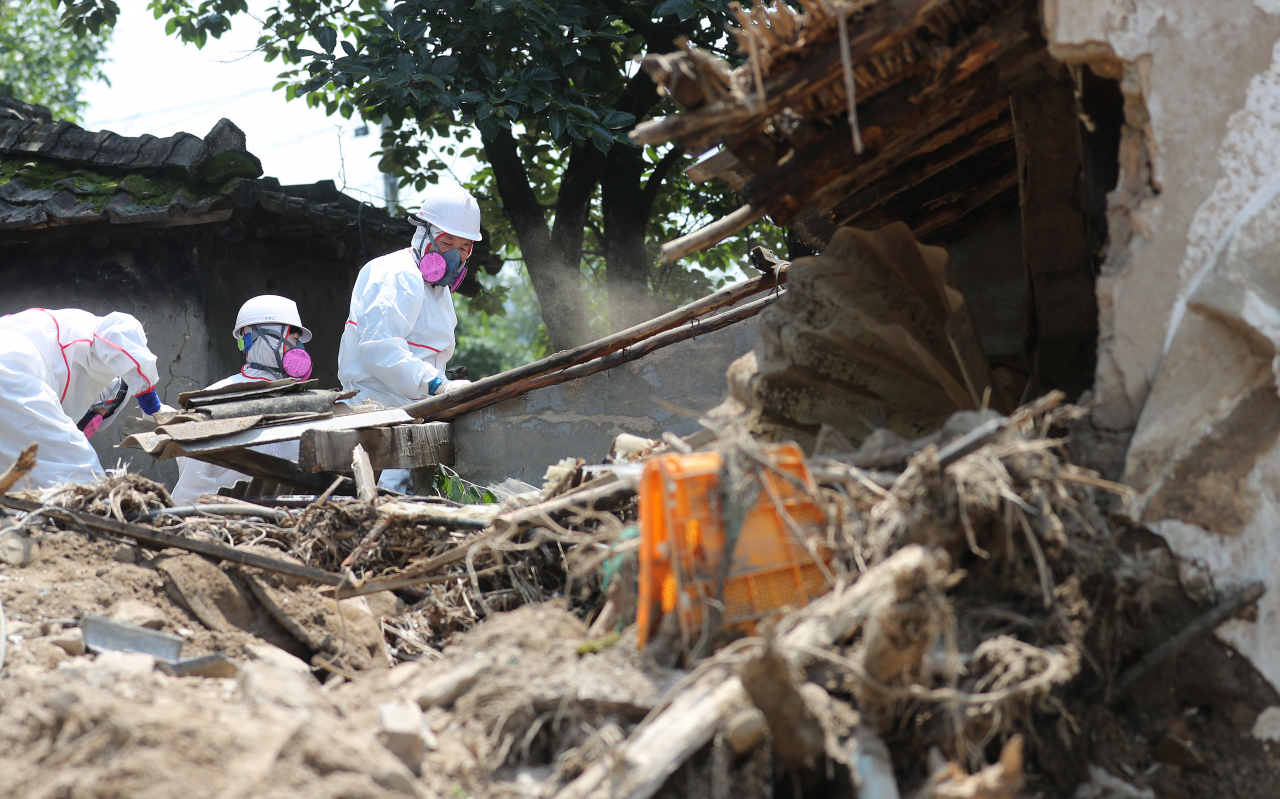Disasters happen because warnings are ignored: experts
Top-down system limits officials' action on field; lack of awareness about severity of disasters, they say
By Lee Jung-younPublished : July 20, 2023 - 14:50

There had been warnings issued before almost all disasters that have happened recently in Korea, including the deadly underpass flooding on July 15.
But the warnings delivered to on-site officials were often ignored or did not reach the top decision-makers, according to disaster management experts.
Lee Soo-gon, a former civil engineering professor at the University of Seoul, said that the "top-down" system of administrations, where officials are instructed to carry out orders rather than suggesting their own policy ideas, may be part of the problem.
"(The current top-down structure) not only limits the officials' action on the field but also neglects up-to-date information," he said, adding that information sharing should include the participation of the local residents who are most aware of the situation in the region.
Lee suggested that voices from disaster scenes had not been taken seriously, referring to his study of 32 major disasters that happened over the past 30 years -- including the Seongsu Bridge collapse, Umyeon mountain landslide, Itaewon crowd crush and the recent Gungpyeong 2 underpass flooding that left 14 dead.
"Local residents can take part in the disaster prevention system as volunteer workers or neighborhood watch groups, providing vivid information about the dangerous area," said Lee, explaining that residents can cover an area that public officials are unable to reach due to insufficient manpower.
According to police, there were reports of possible flooding of the Miho River on Saturday nearly two hours before the river flooded at around 8:45 a.m., submerging the underpass immediately.
"Heinrich's Law -- the theory that claims for every major disaster, 29 minor accidents, and 300 abnormal signals occur beforehand -- can be applied to every disastrous situation. But even with those hundreds of signals, it is hard for the central government and officials who have not experienced the region to take precautions."
Kong Ha-sung, a professor at Woosuk University's Department of Fire and Disaster Prevention, also pointed out the absence of a single disaster control tower. "The provincial government is responsible for the underground road management, but the National Agency for Administrative City Construction thought it was the Cheongju city government’s jurisdiction and asked them to evacuate the residents," he said. "This must have caused confusion."
Not only underground roads, but river management is also intertwined with various institutions. From January last year, river management duties, including disaster prevention, was transferred to the Ministry of Environment. The ministry directly manages only the five major rivers and entrusts the rest to local governments. Accordingly, some say that the divided management is another factor that increased confusion.
For landslide management, the top of the mountain is managed by the Korea Forest Service while the Land Ministry is in charge of roads and trails in the mountain. The bottom portion is managed by local governments and the Interior Ministry.
The government identified the need to install automatic entry blocking devices three years ago when a similar case to the Osong underpass flooding killed three people. But still only 30 percent of underpasses nationwide are equipped with them, Kang said.
"I believe it is because the projects to prevent disasters are not on the priority (of budget execution)."
Korea does not currently lack disaster prevention technology, but the public awareness of how serious that can be, said Kang Jun-gu, a researcher at the Korea Institute of Civil Engineering and Building Technology.
"Now, a real-time disaster alert text system is in place, but even after receiving such messages, not many people seem to be alerted. Even I often overlook it without taking attention," said Kang, who develops technologies to predict the risk of flooding or river overflow.
"No matter how advanced technology is applied, public education and training on evacuation tips should be carried out more often and steadily."
-
Articles by Lee Jung-youn







![[KH Explains] No more 'Michael' at Kakao Games](http://res.heraldm.com/phpwas/restmb_idxmake.php?idx=644&simg=/content/image/2024/04/28/20240428050183_0.jpg&u=20240428180321)











![[Herald Interview] Mistakes turn into blessings in street performance, director says](http://res.heraldm.com/phpwas/restmb_idxmake.php?idx=652&simg=/content/image/2024/04/28/20240428050150_0.jpg&u=20240428174656)
